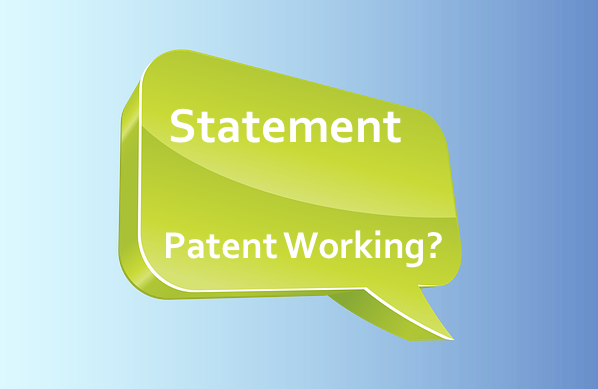As far as common knowledge goes, patents are granted to provide an inventor with the exclusive rights to use the invention in every aspect. In other words, a patent grants an inventor monopoly over his invention. The problem arises if the inventor does not decide to commercially market the patent. What if the inventor decides that he does not want the benefits of his invention (even at a cost) to percolate to the society? Will the invention just remain a showpiece then?
Definitely not. Anticipating situations like this, the legislature incorporated the provision for the ‘Working of Patents’ in the Indian Patents Act, 1970. The following Sections of the Indian Patents Act help avoid the aforementioned situation: Section 83, Section 146 and Section 122.
Section 83:
This section incorporates the general principles applicable to working of patented inventions. The following general principles are stated:
1. Patents are granted to encourage invention and ensure that inventions are worked in India on a commercial scale and to the fullest extent reasonably practicable without undue delay.
2. Patents are not granted merely to enable an inventor to enjoy a monopoly over the patented article.
3. Patents are protected to ensure the dissemination of technology and the balance of rights between users and inventors.
4. Patents granted do not impede protection of public health and nutrition and should act as an instrument to promote public interest especially in sectors of vital importance for the socio-economic and technological development of India.
5. Patent rights are not abused by the patentee.
6. Patents are granted to make the benefit of the patented invention available at reasonably affordable prices to the public.
The aforementioned points clearly point out that a statement of working of patented inventions is important to prevent the patentee from misusing the patent and depriving the public of its benefits.
Section 146:
This section requires the patentee to submit information every year with regard to the extent to which the patented invention has been worked on a commercial scale in India. This Section also enables the Controller to seek information from the patentee, by providing a notice in writing, as to the extent to which the patented invention has been commercially worked in India. The patentee must provide the information within two months from the date of such notice or within such further time as the Controller may allow
Form 27
The Statement regarding the working of a patented invention is required to be disclosed in Form 27 and need to submit it to the Indian patent office. Form 27 requires the following information:
1. Whether the patented invention has been worked or not worked;
a)If not worked, the reasons for not working and the steps being taken for the working of the invention.
b)If worked, the quantum and value (in rupees) of the patented product;
i)manufactured in India;
ii)Imported from other countries (Country-wise details must be furnished);
2. The licenses and sub-licenses granted during the year;
3. Whether the public requirement has been met partly/adequately/to the fullest extent at a reasonable price.
Section 122
This is the penalty section. According to this section, failure to comply with Section 146(2) may make the patentee subject to paying a fine which may extend to Rs. 10 lakh. Providing false information may warrant imprisonment up to 6 months or fine or both.
It is important to note that the statements provided by the patentee may be published by the Controller for public viewing. Publishing the statement of working of patents ensures that the public is made aware of how a patent is being used in India. If a patent is not used adequately, a third-party may make a claim for compulsory licensing.
If an invention is patented but the benefits of the invention do not reach the society, the whole point of the patent system is negated. Working of patents ensures that patents are worked to their fullest extent and that the benefits of an invention are distributed as widely as possible.




